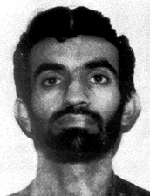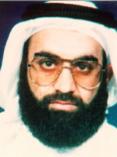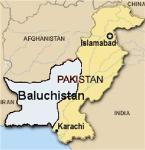
Ramzi Yousef
The mastermind of
the 1993 WTC bomb
The mastermind of
the 1993 WTC bomb
Khalid Sheikh Mohammed
The mastermind of the
attacks of 9/11
The mastermind of the
attacks of 9/11
| Who Are They, and What Is Their Motive? U.S. authorities have identified a single family as the core element in a series of virulent anti-U.S. terrorist plots, starting with the 1993 bombing of the New York World Trade Center and including 9/11. Ramzi Yousef The mastermind of the 1993 bomb that heavily damaged the World Trade Center, Ramzi Yousef has been in U.S. custody since 1995, and he was tried and convicted for his role in that attack. He was also tried and convicted for planning to plant bombs on twelve American jumbojets flying out of Manila, in a 1995 plot. That activity led to his arrest, when he accidentally caused a fire in their apartment and exposed the bombing plot. Khalid Sheikh Mohammed The mastermind of the attacks of September 11, 2001, Khalid Sheikh Mohammed has been officially identified as the uncle of Ramzi Yousef and is implicated in a series of anti-U.S. terrorist plots. He collaborated with Yousef in the 1995 bombing plot, targeting twelve American jumbojets to be blown up in midair. Mohammed managed to escape arrest when that plot misfired, and he went on to join al Qaida’s military operations. As head of al Qaeda's military committee, Mohammed reportedly planned the 1998 U.S. Embassy bombings, as well as the bombing of the USS Cole in 2000. Here is the current roster of this family of terrorists: • Mohammed is officially identified as Yousef’s maternal uncle. • The main paymaster for the 9/11 hijackers in the US was a younger first cousin of Yousef (and nephew of Mohammed). • Two older brothers of Yousef are now understood to be al Qaida masterminds, capable of replacing Mohammed. These men are all from Kuwait (where at least some of them were born), and are of Baluch rather than Arab ethnic background. The Baluch-Iraq Connection It is significant, to Middle East experts, that these terrorists are Baluchis. The Baluch are a Sunni, Muslim people inhabiting Baluchistan, in Eastern Iran and Western Pakistan. The U.S. has had literally nothing to do with them, officially or otherwise. Their traditions, with strong pre-Islamic elements, are not inclined toward militant Islamic fundamentalism, or even especially devout observance. No Baluch, before Ramzi Yousef himself, had been involved in anti-US terrorism. The mystery link appears to be Iraqi influence. Iraqi intelligence has well-established ties with the Baluch on both sides of the Pakistani-Iranian border and employed the Sunni Baluch in assorted operations against the Shia government in Iran, during the Iran-Iraq war in the 1980s. It seems most likely that these non-militant, nominal Muslims were part of Iraq’s established Baluch network — and that their commando skills and training were put to use by Iraqi intelligence against a new enemy, after the Persian Gulf War of 1991. It was less than two years later, in 1993, that Saddam attempted the assassination of Pres. Bush, and that Ramzi Yousef designed the bomb intended to bring down the World Trade Center. Moreover, the Baluch ethnic identity is the only reliable identification we have for Yousef and Mohammed. Their official documentation shows significant discrepancies, raising the possibility that these identities were constructed for them (as is routinely done for intelligence agents). And, in the case of Ramzi Yousef, if the identifying documents prove to be fraudulent, that fact would point directly to file-tampering by Iraqi intelligence, during the occupation of Kuwait. Continued on next page: The Baluch-Iraq connection |

Examine
the files:
the files:
Nothing but
the evidence
about Iraq’s
involvement
with anti-US
terrorism.
the evidence
about Iraq’s
involvement
with anti-US
terrorism.
| The Terrorist Masterminds |


Map of Pakistani
Baluchistan.
The Baluch region also
includes an area of
eastern Iran.
Baluchistan.
The Baluch region also
includes an area of
eastern Iran.
